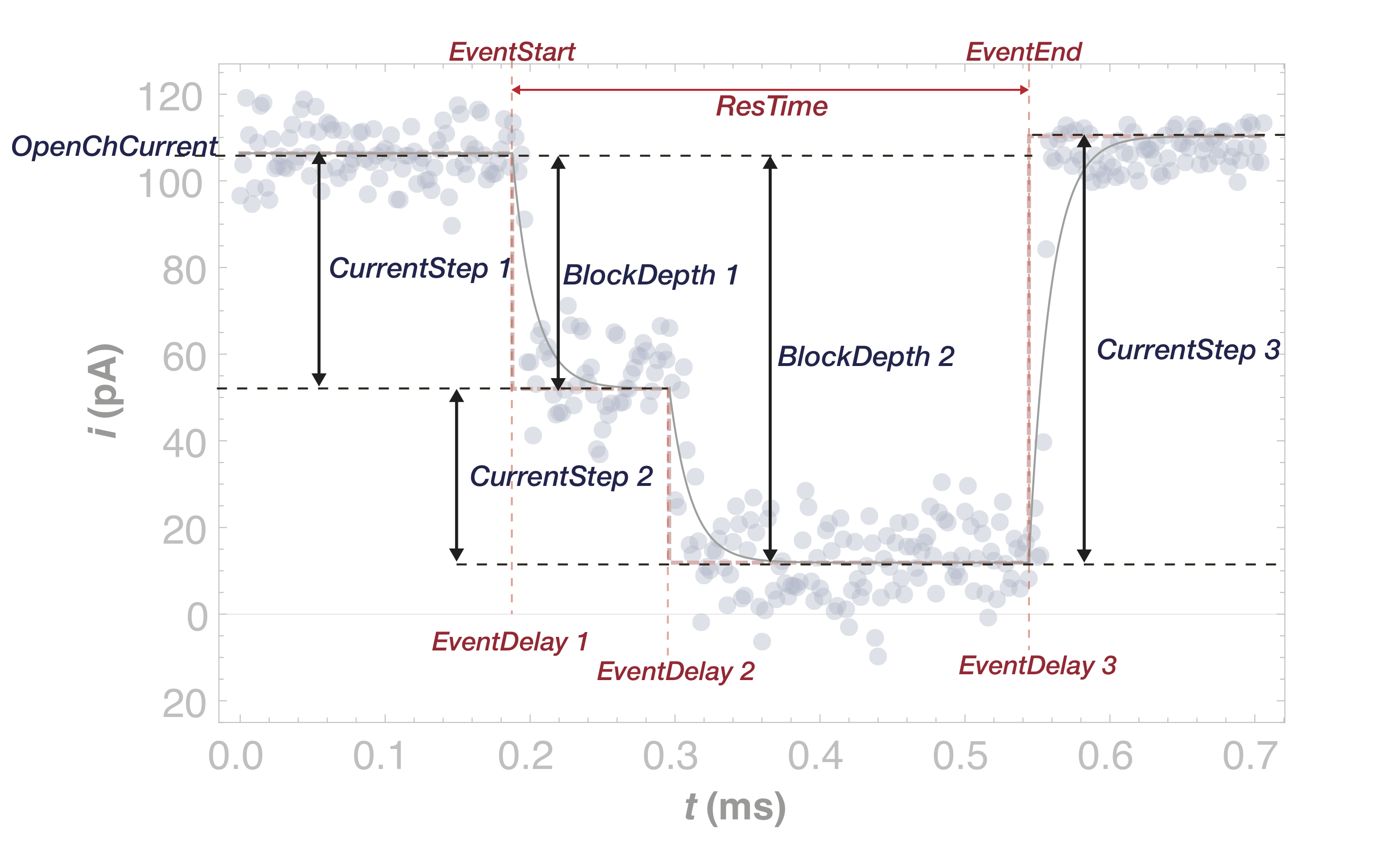ADEPT¶
The multistate algorithm implements the general case for identifying states in nanopore data []. The general form of the equation used in this algorithm is shown below, where N is the number of states. This functional form is fit to a time-series from a single event to recover optimal parameters for the mdoel.
Settings that control the fit are defined through the settings file and are described in more detail in the Optimizing Settings section. Upon successfully fitting the model to an event, adept generates meta-data the describes the individual states in the event. A representative example of one such event is shown in the figure below.

Algorithm Settings¶
Metadata Output¶
The adept algorithm outputs meta-data that characterizes every processed event. Similar to the ADEPT 2-State algorithm, this information is stored in a SQLite_ database and is available for further processing (see Database Structure and Query Syntax). Notably, the data output by adept differs from adept2State in one important way. Because the number of states (NStates) detected in each event is not pre-determined, key meta-data (e.g. BlockDepth, EventDelay, etc.) are stored as arrays of real numbers with length equal to NStates.
Column Name |
Column Type |
Description |
|---|---|---|
recIDX ProcessingStatus OpenChCurrent NStates CurrentStep BlockDepth EventStart EventEnd EventDelay StateResTime ResTime RCConstant AbsEventStart ReducedChiSquared ProcessTime TimeSeries |
INTEGER TEXT REAL INTEGER REAL_LIST REAL_LIST REAL REAL REAL_LIST REAL_LIST REAL REAL_LIST REAL REAL REAL REAL_LIST |
Record index. Status of the analysis. Open channel current in pA. Number of detected states. Blocked current steps in pA. BlockedCurrent/OpenChCurrent for each state. Event start in ms. Event end in ms. Start time of each state in ms. Residence time of each state in ms. EventEnd-EventStart in ms. System RC constant in ms. Global event start time in ms. Reduced Chi-squared of fit. Event processing time in ms. (OPTIONAL) Event time-series. |